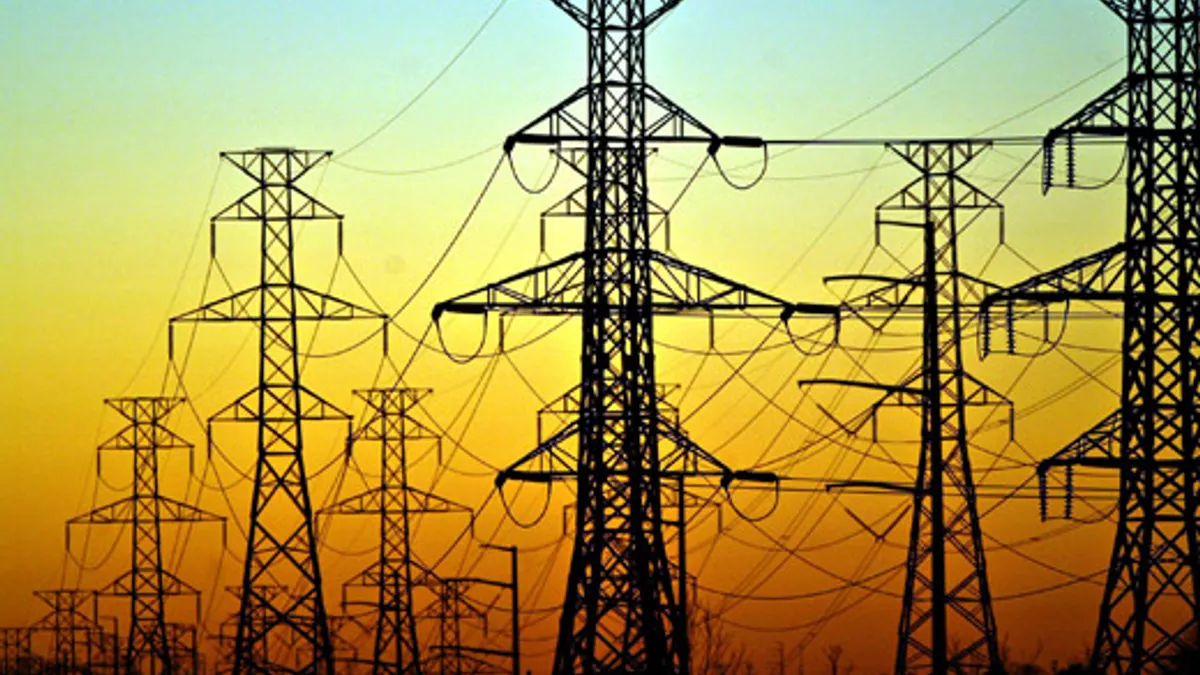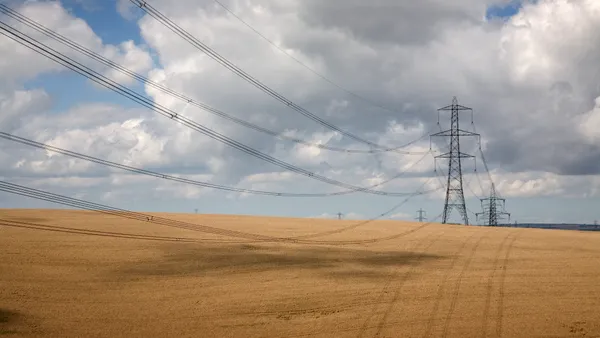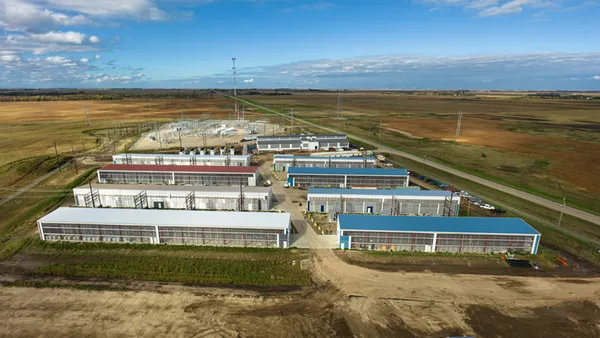The following is a contributed article by Devin Hartman, energy and environment director at R Street Institute.
The ongoing COVID-19 response is an enormous test of the quality of energy institutions and policies. The energy sector has assumed its initial posture and must now proactively position to weather the worst of the storm. From here, it becomes an iterative risk management exercise as new information becomes available and requires rapid, coordinated decision-making across an enormous set of stakeholders. Addressing energy governance constraints is a priority, such as fine-tuning uniform, centralized government responses and enhancing decentralized responses across heterogenous state and local conditions.
The primary objective is to maintain operations for critical energy services. Fortunately, extensive efforts under the last three administrations leave critical energy services better prepared for a pandemic than in previous decades, especially efforts begun in the 2000s to improve interagency and government-private sector coordination orchestrated by the Department of Homeland Security (DHS). When COVID-19 first began to spread, the Department of Energy (DOE), Federal Energy Regulatory Commission (FERC), and North American Electric Reliability Corporation (NERC) were engaged in an unprecedented level of collaboration. However, with models projecting that the peak of COVID-19 is yet to come, many current measures are not necessarily durable for a multi-month outlook.
Regulators and policymakers must consider their next moves. Policymakers need to stay focused on addressing the crisis at hand and avoid temptations to divert resources to unrelated side-agendas. Delaying regulatory and policy reforms that lack a complete record may be prudent after accounting for institutional opportunity costs and the new limits of stakeholder participation. That said, crisis breeds motivation for reform, and thoroughly deliberated regulatory reforms remain worth pursuing to better position the sector for a cleaner, more prosperous and more secure energy future.
Accomplishing these objectives falls into seven categories for energy policy reform to address today’s crisis and tomorrow’s opportunities.
- Update and deepen government-industry contingency efforts and security information flows to private critical energy services. The initial energy sector response is well-suited for continued energy service operations in the coming weeks, but addressing intermediate-term issues presents a new set of challenges. For example, the swiftness of the initial Electricity Subsector Coordinating Council and NERC’s COVID-19 contingency responses was impressive. But contingency planning has always been a work in progress. Generic “high impact, low probability” protocols are changing on the fly, while even pandemic-specific plans require adjustment to unique COVID-19 parameters. Although critical energy industries plan for a variety of contingencies, including pandemics, COVID-19 is revealing the vulnerabilities of multiple contingency scenarios. Most notably, an increase in cyberattacks highlights that hostile actors recognize greater opportunities to execute nefarious acts. Accelerating the rate and quality of information transfer on cyberattacks from the intelligence community to the private sector has been a policy priority the last couple years, and now its vehicles — the Information Sharing and Analysis Centers — need to be on steroids. Modifying contingency plans for severe weather responses may also be warranted, given that the baseline assumptions of these plans do not reflect the human and other capacity constraints imposed by pandemic conditions.
- Clarify what constitutes “essential” energy work and adapt it to evolving conditions. Inconsistent state policies and confusion still abound, such as coal mines ordered to shut down in Pennsylvania only to be deemed “essential” the next day. The FERC and National Association of Regulatory Utility Commissioners asked states to designate utility workers as “essential” to help a stretched workforce. Clarity is emerging in the initial pandemic response, but more nuance on various energy industry roles and refined coordination is critical as new public health information emerges. Among many variables, modifications in “essential” designations should mirror the projected timeframe of the public health crisis. Certain energy supply chain segments may not be essential for a spring-only crisis but could become so if extended into summer. Further, near-term risk mitigation must be mindful of shifting risk to the intermediate-term, which may incidentally exacerbate total risk. For example, thermal power plants often require springtime maintenance and refueling to maintain summer operations when they’re needed most (e.g., refueling nuclear plants is a labor-intensive undertaking). The pandemic-induced shifts in location and levels of summer energy demand also factor into system operators’ and regulators’ summer planning, while updating and coordinating planned outages for maintenance and refueling is paramount (in recent years, the deficiencies in current practices have been evident under normal conditions). Accounting for all these variables, energy regulators and industry will need to re-examine system and labor requirements for reliable summer operations and communicate it to high-level policymakers who factor-in public health objectives in determining “essential” energy work.
- Enhance protections for essential energy industry workers. Current measures, such as grid operators in total sequestration working 12 hour shifts, may work on a week-to-week basis but extended isolation and extensive stress raise obvious concerns if continued indefinitely. Further, self-quarantining is not infallible, while the proximity of working conditions (e.g., power plant control room) puts entire facility crews at risk of uniform COVID exposure. Given the associated risk to facility operation, additional mitigation and contingency steps may be warranted. Options include segmenting transmission communities of essential high-skill energy workers, increased automation to lessen reliance on specialized labor and preparing emergency replacements should a critical mass of a specialized community fall ill simultaneously. At minimum, cross-training staff with similar specialized skillsets (e.g., same job function but different employers) and reducing regulatory rules to labor sharing may help provide a hedge against labor shortages if the pandemic stretches well into summer.
- Enact energy regulatory triage based on public interest priorities. The pandemic has left regulators and stakeholders with fewer resources and far greater burdens, requiring rapid regulatory reprioritization with limited information. State utility regulators have begun to adjust procedural schedules for routine processes, such as rate cases, while policy vehicles (e.g., notices of inquiry, notices of proposed rulemakings) may warrant delayed review and comment periods. Pressing issues, such as modified power and natural gas shutoff rules, are rising to the forefront. Regulators and stakeholders should also pre-position themselves for different pandemic scenarios. The longer pandemic conditions remain, the greater the need to consider revisions to the first wave of contingency response, such as operations continuity plans. Extended conditions will stress traditional cost-of-service regulatory models, especially for electricity and natural gas utilities, as COVID expenditures rise and revenues decline and shift between customer classes. Aligning cost recovery with the bedrock cost-causation principle would increase rates for residential consumers — where demand has risen relative to commercial and industrial classes — and exacerbate concerns of household impacts of the pandemic. Utilities under alternative rate structures require less regulatory tinkering, as they tend to automatically adjust rates based on fluctuating revenues and operating costs.
- Promote healthy energy commodity markets. During volatile periods it is especially important to ensure price formation accurately reflects underlying fundamentals and lift regulatory burdens that pull energy traders away their frantic day jobs, especially if they become shorthanded. This calls for a temporary shift in regulatory oversight, and FERC’s recent ease of enforcement rules for electric power and natural gas markets is a fair attempt at just that. It would be prudent in the coming weeks to refine an approach that hits the pause button on micro-compliance issues, such as data requests and audits, and enhance scrutiny on the macro concerns like market manipulation under liquidity-constrained conditions. On the other hand, price and quantity controls are the wrong answer; large price swings are the critical conduit to reallocate scarce resources in times of over-supply (e.g., oil) and under-supply (e.g., power and gas infrastructure outages). Subsidies, such as those proposed for the oil industry, discourage industry from managing risk properly and leave us more susceptible to future economic shocks. Any public financial assistance should avoid industry favoritism and provide the private sector with better liquidity during a tough stretch in capital markets.
- Retain focus of public expenditures on COVID relief measures and pump the brakes on expenditures for energy and infrastructure side-agendas. Under current economic conditions, the preferable form of fiscal response is targeted, temporary relief rather than stimulus. Stimulus for energy infrastructure historically rewards politically popular projects over economically sound ones. The ongoing lobbying frenzy indicates more of the same. The COVID response is a multi-month issue, whereas addressing climate change requires improving our institutions and policies to drive cleaner investments over decades. Public expenditures should address the crisis at hand and not divert resources to infrastructure with little relief value, which would instead benefit more from regulatory reform to spur private investment for years to come.
- Harness political enthusiasm for clean energy and infrastructure to enact lasting regulatory reforms. The current political climate presents an opportunity to overcome inertia and unlock private capital to the long-term benefit of the economy, environment and our fiscal outlook. Harnessing this enthusiasm presents numerous pathways to reduce regulatory impediments to clean energy infrastructure. One is to overhaul project licensing and environmental permitting processes under the National Environmental Policy Act, Endangered Species Act, Section 401 of the Clean Water Act and New Source Review provision of the Clean Air Act. Congress should also reform transmission siting policy and encourage the Federal Energy Regulatory Commission to streamline power plant interconnection processes and reform policies that affect transmission system planning and utilization.
If there’s any silver lining in this crisis, it’s that it will leave us better prepared for future pandemics and just may compel us to improve our regulatory architecture for the long haul. Reducing barriers to the flow of capital and labor is a common thread to improve the performance of energy investments and operations under emergency and routine conditions. For example, more efficient capital-labor substitutions would enable us to bolster systems controls automation that improve operations optimization and reduce the risk of human capital shocks on continued operations for critical energy infrastructure.
Above all, COVID-19 underscores the importance of high-quality baseline policies and institutions, from facilitating healthy energy commodity markets to sound energy infrastructure cybersecurity practices. This requires cultivating environments where decentralized actions thrive and centralized actions stick to and improve upon their proper roles: gathering and disseminating information, coordinating interagency and government-industry contingency planning and execution, and developing and implementing efficient standards that minimize regulatory burdens. For example, this is an opportunity to accelerate the pivot towards flexible, performance risk-based critical infrastructure standards rather than prescriptive, uniform ones that are poor fits for customized contexts and dynamic conditions. Refraining from overbearing centralized responses is equally important, including avoiding extensive risk socialization, commodity price and quantity controls and wasteful public expenditures.
Altogether, refining an integrated, adaptable and robust risk management framework across the energy ecosystem will position us best to manage the difficult months ahead and seize opportunities for the long-term silver lining.














